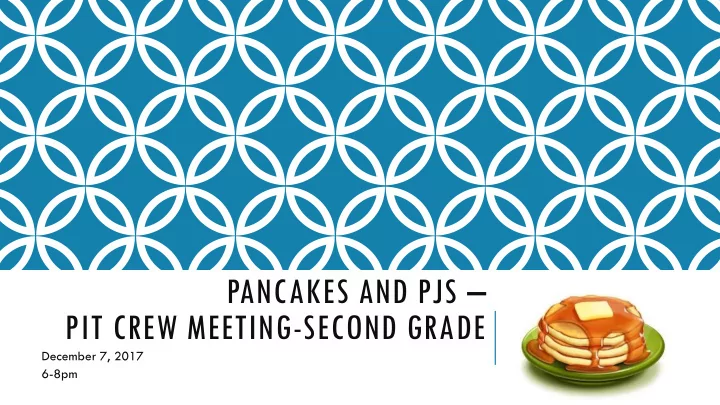

PANCAKES AND PJS – PIT CREW MEETING-SECOND GRADE December 7, 2017 6-8pm
DI – DIFFERENTIATED INSTRUCTION - Students were given IDI (Informal Decoding Inventory) to assess student needs -Students were grouped per their data (IDI/RI Scores/Fluency Scores) -Students go to their designated classroom for their group Group 1 Group 2 Group 3 15 minutes Teacher Group Self- Selected Written Response Reading on RI Level 15 minutes Written Response Teacher Group Self- Selected Reading on RI Level 15 minutes Self- Selected Written Response Teacher Group Reading on RI Level
DI CONTINUUM Second Grade First Grade Kindergarten Student’s DI Group:_________________________________________
PHONOLOGICAL AWARENESS & WORD RECOGNITION Group includes: Basic Alphabet Knowledge, using letter sounds, and using letter patterns. On this bottom step students are using what they know about oral language to enter the world of written language. They will learn: ❖ Their letter names and sounds ❖ Learn to segment and blend speech sounds ❖ blend letter sounds to read simple words
WORD RECOGNITION AND FLUENCY Group Includes: Blends and Diagraphs, R-controlled Vowels, Vowel Consonant-e(sneaky e), and Vowel Teams Students on this second step know their letter sounds and can use them to decode many unknown consonant-vowel-consonant (CVC; short vowel) words. They understand that English spellings are a code, but they are admittedly novice code breakers. They will learn: ❖ phonics patterns (blends, digraphs, r-controlled vowels, vowel-consonant-e, and vowel teams) ❖ practice reading words in isolation and words in controlled contexts.
FLUENCY AND COMPREHENSION - These children have relatively few decoding problems, but they lack automaticity. -They will work in a guided reading format where they may review particularly challenging words (for their pronunciation or their meaning) but they will use most of their times reading and rereading challenging leveled texts and discussing text meaning. ❖ Multisyllabic Decoding (if needed per student data) ❖ First Read (Echo or Choral) ❖ Second Read (Partner or Whisper) ❖ Comprehension Discussion (How and Why Questions)
VOCABULARY AND COMPREHENSION -These children are at grade level in the areas of decoding and fluency -They will extend what they know into new texts and new text types. ❖ Introduce/Review Book ❖ Preview/Teach Vocabulary (Before or after depending on fiction/non fiction) ❖ Discuss Text Structure ❖ Suggest Focus for Reading ❖ Students Read Silently ❖ Review Text Structure/Discuss Comprehension of Reading
Recommend
More recommend